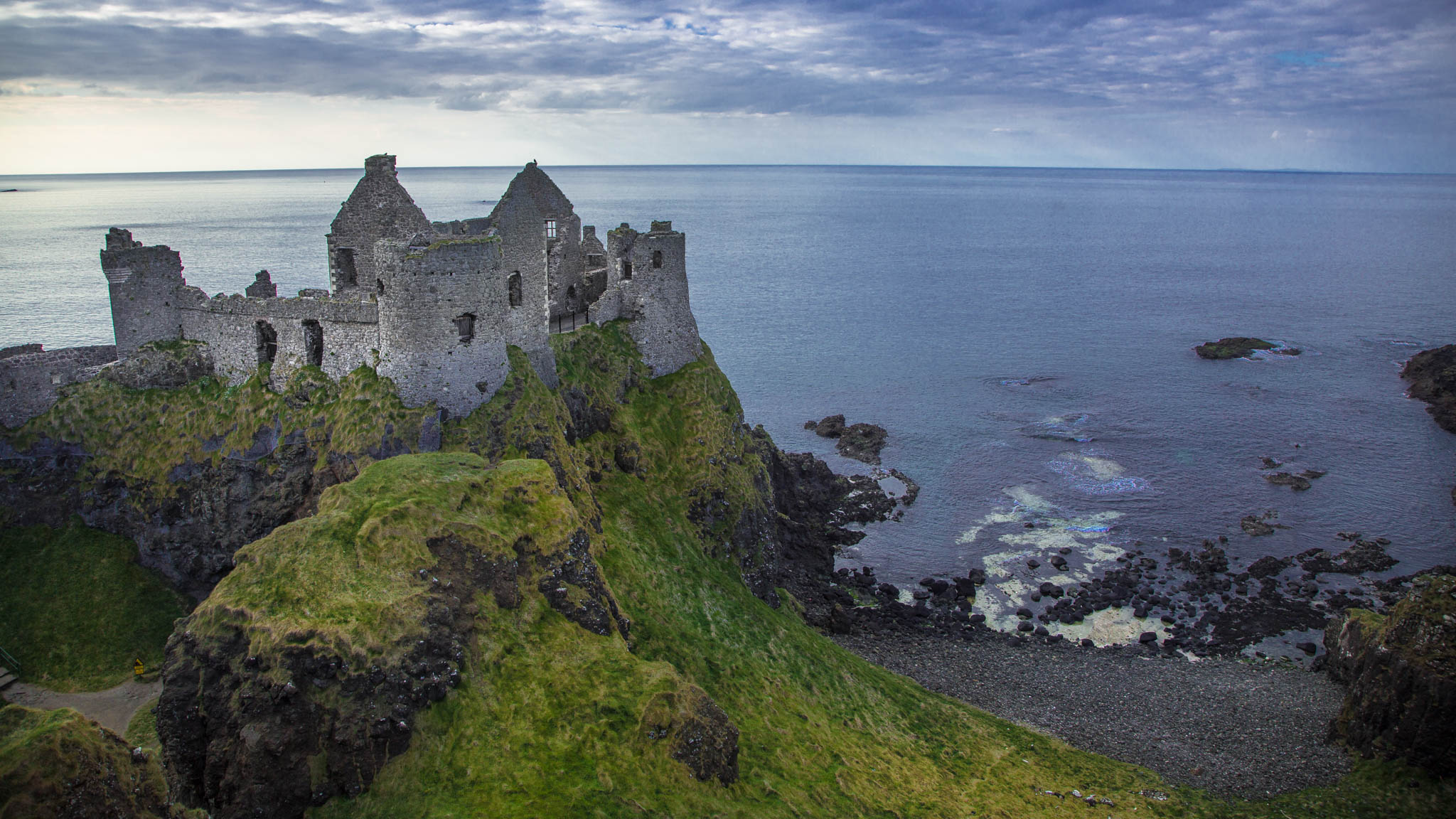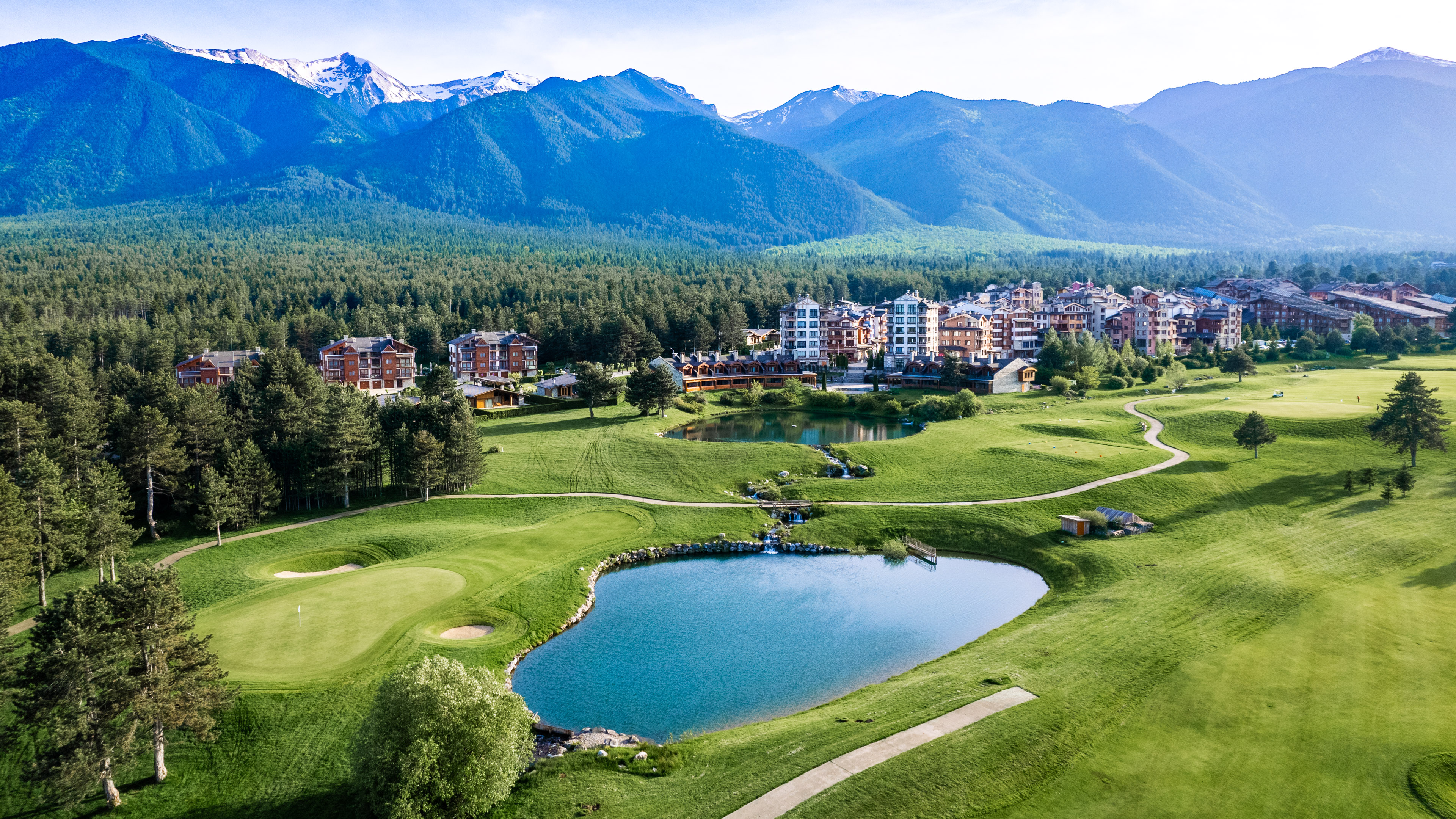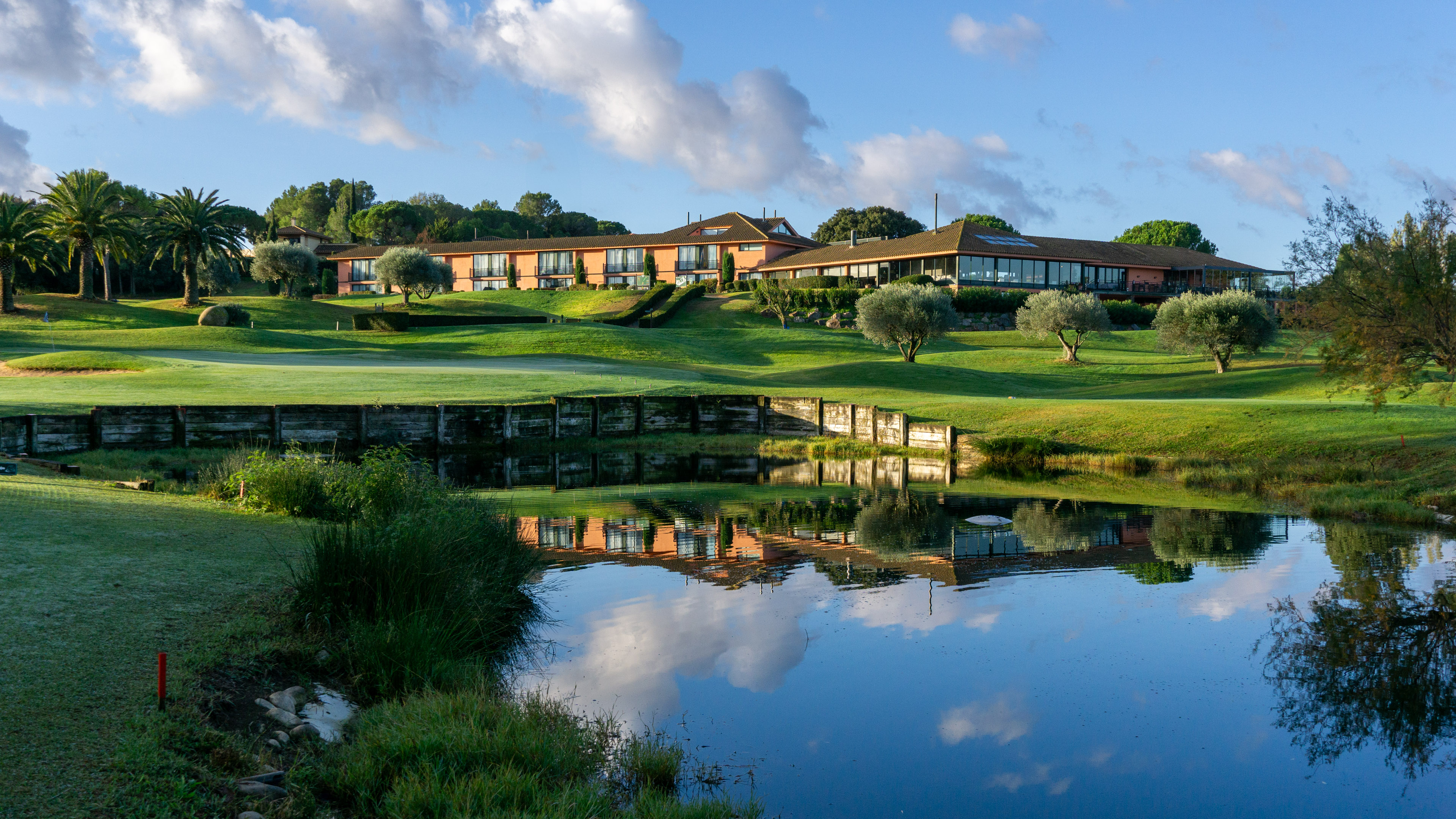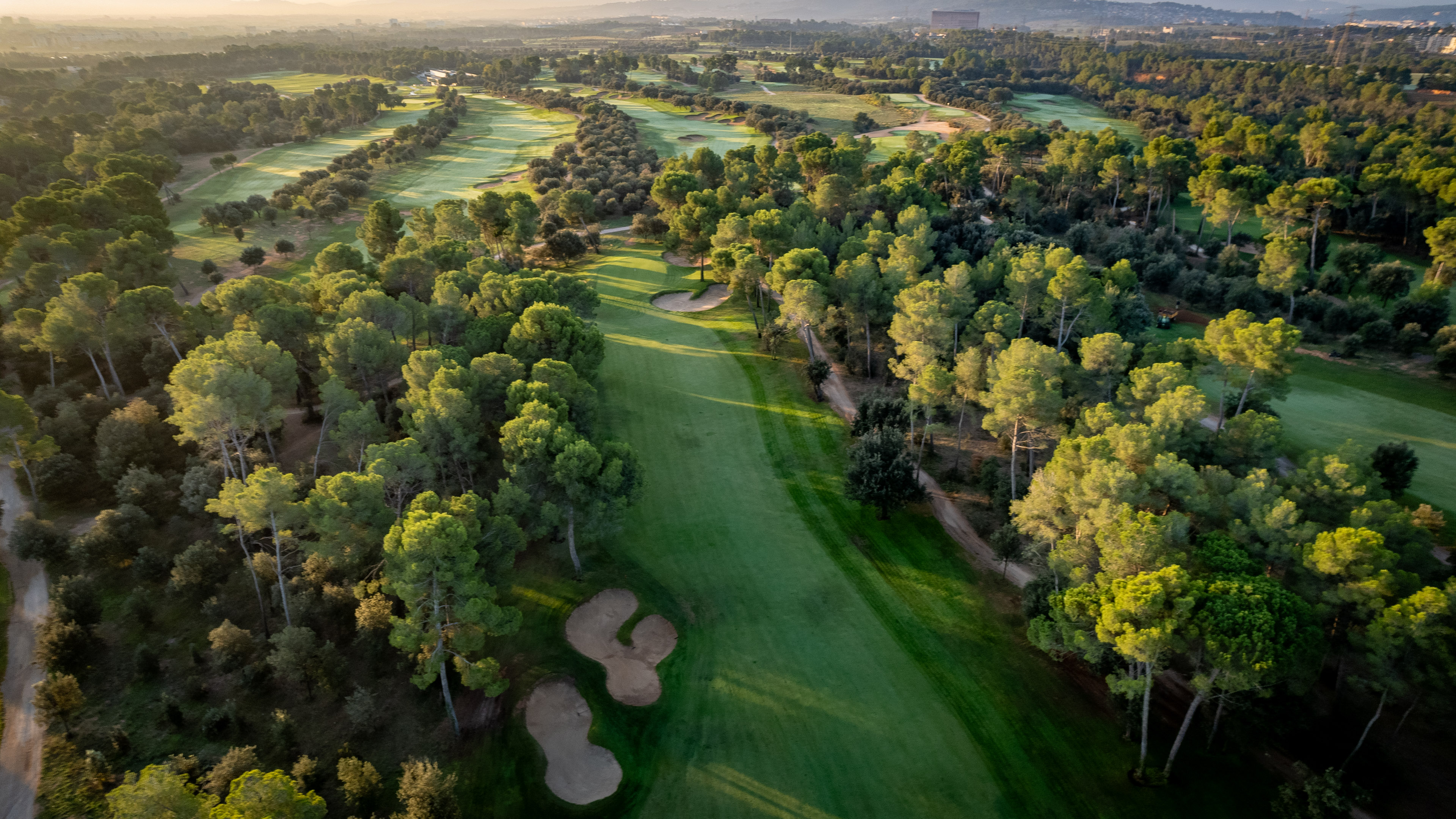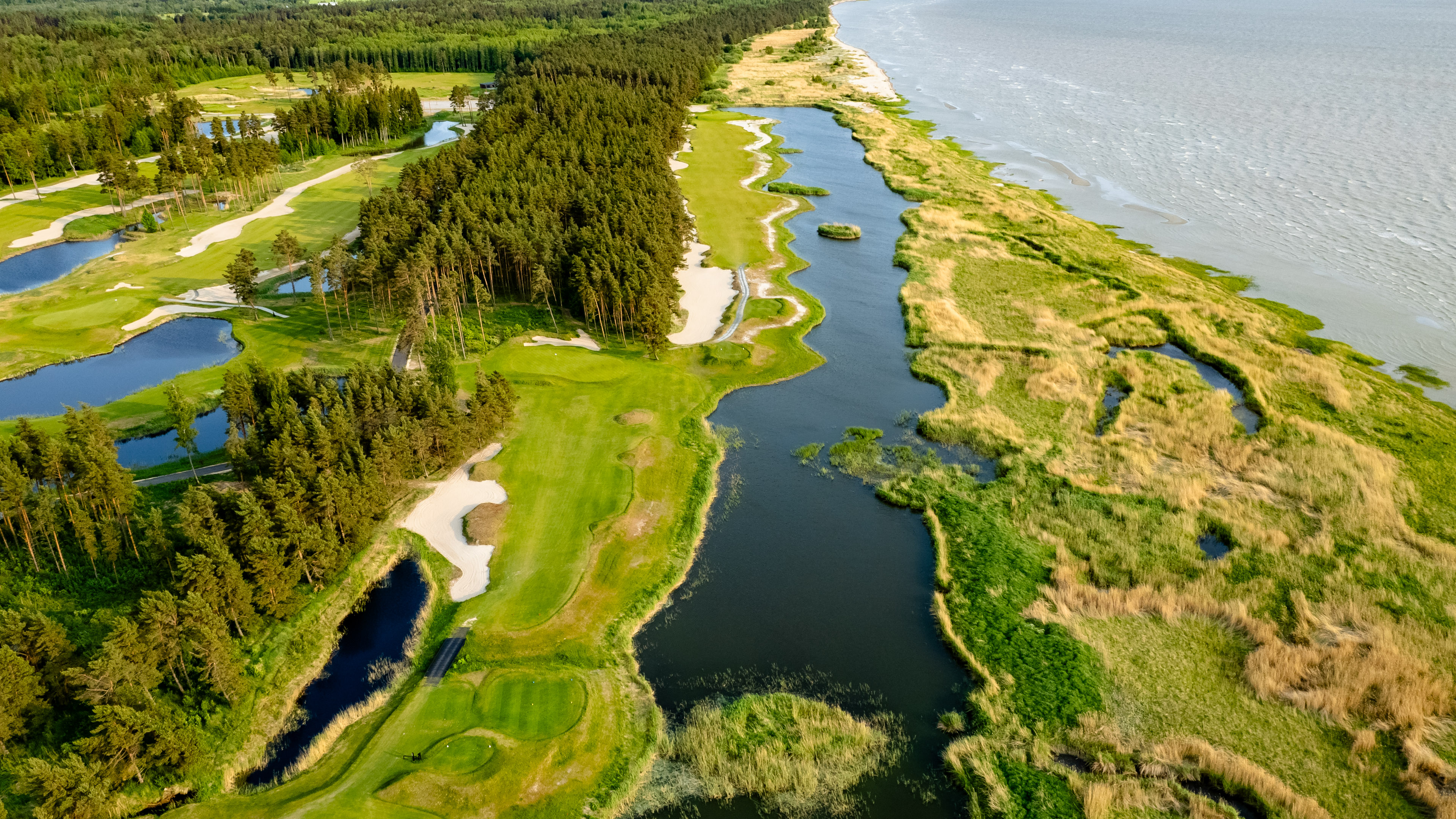At Bushmills, Northern Ireland, you’ve got your work cut out for you. First day, 18 holes at classic Castlerock. Take selfie. Drink Guinness. Next day, Portstewart and the amazing stepping stones of the Giant’s Causeway before a dram of whisky by the fireside at the inn. Third day, top it all off with Royal Portrush, home of the Open Championship in 2019.
It doesn’t get much better than this. That’s what I keep on thinking as I make my way in the early morning light across the Dunluce course at Royal Portrush, heading out toward the 5th green that sits right out toward the edge of the escarpment plunging down to Atlantic. This is the ultimate experience – I can die happy now!
After having visited Ireland for my first golf trip just a year ago, I have spent some time mulling about the wasted decades prior to that. How could I have let so many years pass without taking heed of all the people who told me that Ireland is ‘the best’ for golf? Why didn’t I listen? And now I only have half a life left to make amends. It’s quite upsetting.
“Go north, young man!” (or anyone else)
Oscillating between delirious happiness and rueful melancholy, I decide to banish my regrets. I will live in the moment on this golf trip to Northern Ireland. There is so much to enjoy. And for those people who go to Ireland and limit themselves to the southern part of the country: you’re really missing out! Go north next time.
We started off in Dublin, and the windswept Portmarnock Links – a great way to get into the dunes immediately, as it’s only a short taxi ride from Dublin Airport. It feels like it’s much more remote, with the ocean, the gorse and some great links holes. The Championship course (par 71, 6350 yards) was designed by Bernhard Langer and opened in 1995 in the impressive grounds of the Jameson (of whisky fame) estate of St Marnocks.
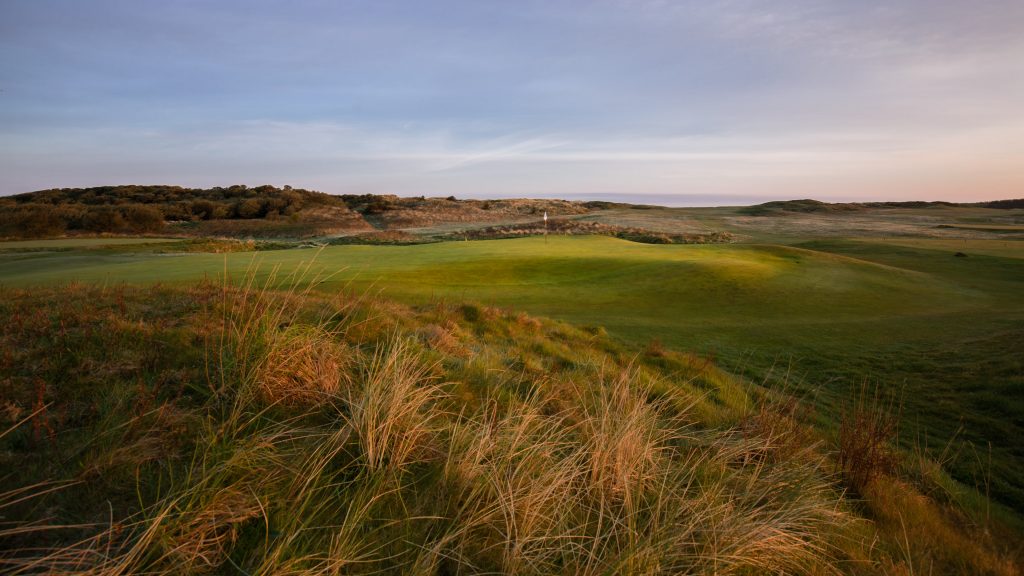
From there, we made our way up the coast to Ardglass (par 70, 6268 yards), a track that some people rank among the very top in the country. Ardglass sets you up on the edge of the Irish Sea, with a castle as a clubhouse, and views of the Mourne Mountains. There are some great, and some quirkily fun holes, which will entice you to stay an extra day and play the course again.
After making our way up north to the Causeway Coast, we set up base in the Bushmills Inn, a shelter both homey and luxurious in the middle of a small village that is known internationally, mainly due to the Old Bushmills Distillery. They know their Irish whisky and how to take care of golfers – luckily this old coaching inn is in the heart of some of the very best golfing territory known to mankind.










On our first day on the Causeway Coast we headed out to Castlerock, 20 minutes away in County Londonderry. Castlerock beach is an awe-inspiring, golden, sandy beach. Next to it sits the golf club, with magnificent views of the Donegal Hills and the River Bann Estuary, and Scottish isles on the horizon.
Castlerock was founded in 1901 with nine holes, and is the kind of unassuming club that one seems to find with regularity in Ireland. Ben Sayers, an eccentric pro from North Berwick, designed the 18-hole Mussenden course. He was said to have been trained as a circus acrobat before devoting his life to golf, and would do cartwheels on the green after holing an important putt. Mussenden opened in 1908, named after a renowned cliff-top temple from the 18th century. Castlerock also has the 9-hole Bann course.
The website promises that the Mussenden (par 73, 6805 yards) will challenge every ‘department’ of my game. Unbeknownst to Mussenden, my game is one-departmental – so any challenge is a total challenge. The wind is not too active, but the rolling links land and hungry dunes don’t need the aid of the wind to make my ball disappear into the mist.
The Mussenden course at Castlerock starts off a little tritely, with a few not-so-memorable holes along the railway line, until it reaches the 4th hole, a par three named Leg O’Mutton. Locals call it ‘The Infernal Triangle.” At 200 yards from the back, with waterway menacing on the left side and four bunkers keeping watch over the green, it makes you think before you hit. Castlerock gets even more dramatic when it moves into the dunes, with some pretty cool holes on the back nine, including some heavily undulated fairways. The 18th is a memorable dogleg where your approach shot will be up to a two-tiered green on a very high plateau (take enough club!) right in front of the clubhouse windows (don’t take too much club!). A birdie on this hole, and you might want to do a cartwheel or two.
It turns out that some of the mobile homes we could see from the clubhouse were available for not very much money. I started dreaming about owning a little caravan and playing golf in Ireland every summer. That is, until I read the set of rules posted in large, austere script on the wall by the first tee: “No ladies may tee off before 2pm on Saturdays.” Hmmm. Maybe not.
On to County Derry
Three miles west of Portrush on the Causeway Coast lies Portstewart, one of Ireland’s few clubs that offer three 18-hole golf courses. The par 64 Old Course traverses the rocky shore east of Portstewart, where the Club was founded in 1894. The par 68 Riverside course is billed as a ‘perfect day out for the society golfer.’ The top course is The Strand (7004 yards, par 72), named after the Portstewart Strand, a two-mile beach which can be seen from the first tee. Some of the links courses in the area are 100 years old or more, but The Strand is less than 25 years old, with most holes designed by local school teacher Des Giffin. Since its opening in 1992 it has hosted numerous competitive events.
As icing on the three-tier cake, a completely modern clubhouse was opened in 2009, with fantastic views over the Riverside and Strand courses, the beach, the River Bann and the Donegal Hills. This has to be one of the most complete links golf facilities in all of Ireland.
The first hole is its most awesome, generally viewed as one of the most beautiful opening holes in the country. There’s nothing like this breezy start, a free-swinging downhill shot toward the dunes, with the alluring beach off to the right. Not that it’s easy, a dogleg right at 427 yards.
From the first tee, we plunge downwards. The second is a challenge where you have to accurately place your drive between two towering dunes, the closer one on the right and the further one on the left. The approach shot is uphill over a severely narrowing fairway, while the green is two-tiered.
Each hole on the front nine is its own little secluded spot on the planet, as the course seems to flow gracefully in the valleys. Then we go out and up again along the river. The first nine holes are some of the most dramatic in links golf, and if the second nine were equal the course could be counted among the world’s top 100, perhaps. But the terrain gets gentler and less exciting on the back half.
Join the elite for one day
The highlight of the trip is Royal Portrush’s Dunluce Links course (7143 yards, par 72). The course was built in 1888 and redesigned by Harry S. Colt in 1932 with subsequent changes that saw the loss and addition of some holes. It winds through, over and atop some grand coastal sand dunes – truly majestic surroundings. No wonder it’s ‘royal’.










Calamity Corner, the 210-yard par three 14th hole, is probably the most famous of the 18. When the wind is up, it can look absolutely daunting. The 5th hole, ‘White Rocks’, a par four of 411 yards, is another stunner, with the green perched right next to a severe drop toward the beach.
In 2019 Royal Portrush will host the Open Championship for the first time since 1951. In the intervening years, the course will see some major redesign, done by Martin Ebert. The 17th and 18th holes have long been considered the weakest of the course despite the strikingly large ‘Big Nellie’ bunker. Those two holes will be taken out completely and submerged under the Open Pavilion and spectator facilities.
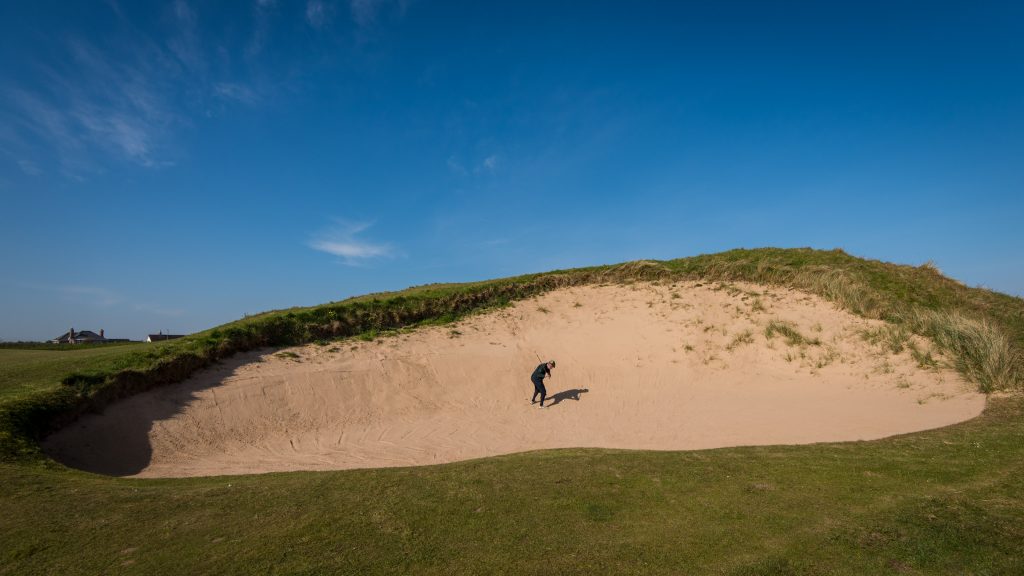
Two brand new holes are being shaped from seaside land of the adjacent Valley course, and they will become the new 7th and 8th holes. This will change the subsequent hole order of the Dunluce course. The overall length of the course will increase by about 200 yards to 7,337 yards. A few new bunkers will be added, bringing the total to 62. That’s still not very many, as it’s the lowest number of bunkers of any course on the Open Championship rota.
That’s not to imply that this course is easy. Most certainly not. Rory McIlroy did score a 61 on the Dunluce in an amateur event when he was only 16. Standard scratch score from the back tees is 75. The Ulsterman rates the Dunluce as his favorite course outside of the US, calling it “a truly awe-inspiring experience.” We have to agree.
